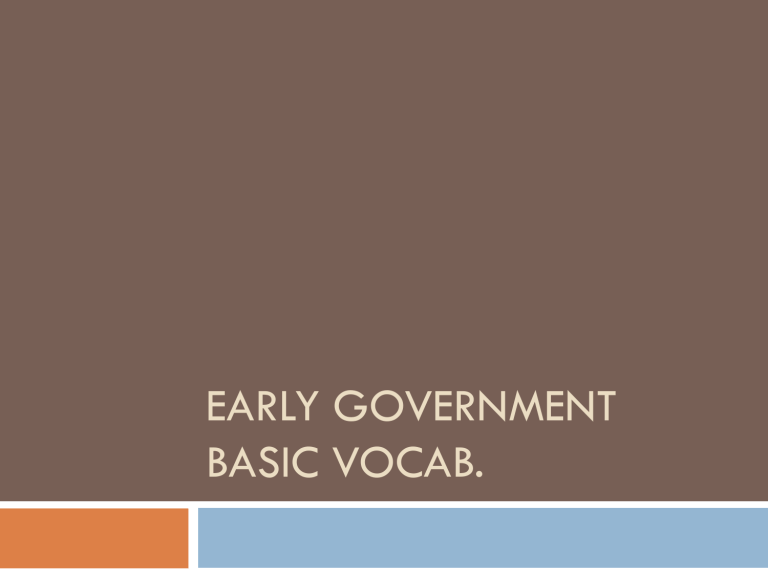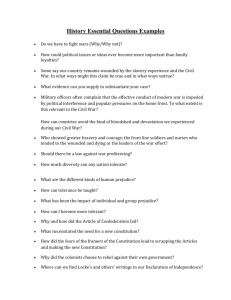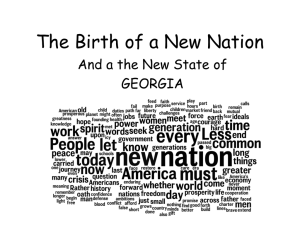Early Government Basic Vocab.
advertisement

EARLY GOVERNMENT BASIC VOCAB. Articles of Confederation Governing document that came before the U.S. Constitution America’s 1st Constitution Very weak central government…issues led to the U.S. Constitution U.S. Constitution Established 3 branches of government Established “Separation of Powers” and “Checks and Balances” Our current laws are based on this document Constitutional Convention of 1787 Meeting held to rewrite the Articles of Confederation and solve the problems of the national government Instead of rewriting the Articles, we wrote an entire new document called the U.S. Constitution Abraham Baldwin and William Few represented Georgia Abraham Baldwin Represented Georgia at the Constitutional Convention of 1787 Signed the U.S. Constitution as a rep from Ga. Instrumental in helping resolve the large state-small state issue of representation William Few Represented Georgia at the Constitutional Convention of 1787 Signed the U.S. Constitution as a rep from Ga. Bill of Rights 1st 10 amendments to the U.S. Constitution Referred to as “Individual Freedoms” Ex. Freedom of Speech, Religion, Press…Right to bear arms, speedy trial… The Great Compromise Argument about state representation in central government. Made of two main plans.. New Jersey Plan- Small State Plan Virginia Plan- Large State Plan This led to equal representation in the Senate and proportional representation in the House of Representatives. 3/5 Compromise Decision on representation based on slave population. Issue driven by the slave owning south to count slave populations toward overall representation Each slave would could as 3/5 of a person toward overall population in the state (House of Reps) “T” Chart Georgia Constitution of 1777 Strengths Weaknesses • Still have Legislative Branch • Legislature Unicameral (one house) • Three Branches • Not “Checks and Balances” – No second house in Legislative Branch • Three Branches had separate powers • Established counties – replaced parishes • Established local (county) governments • Governor served only 1 Year • Executive Branch (Governor) was weak – Couldn’t Veto Laws, grant pardons, “Chief Executive” only by name • Legislative elected council – had power to veto the Governor • Three Branches, but the Legislative was more powerful than the others “T” Chart Articles of Confederation Strengths • First written constitution – Articles of Confederation (Nov. 1777) • Had a Legislature • Strong State governments Weaknesses • Weak central government • No Executive or Judicial Branch – no one to enforce laws or hear disputes • Did not allow the central (federal) government to levy (impose) taxes • Weak Union, feared strong central government • No “Checks and Balances” • Central Government did not have taxes, so no military • Central Government did not print money •All power lied with the states • Each state had an equal vote in Congress – regardless of size or population







